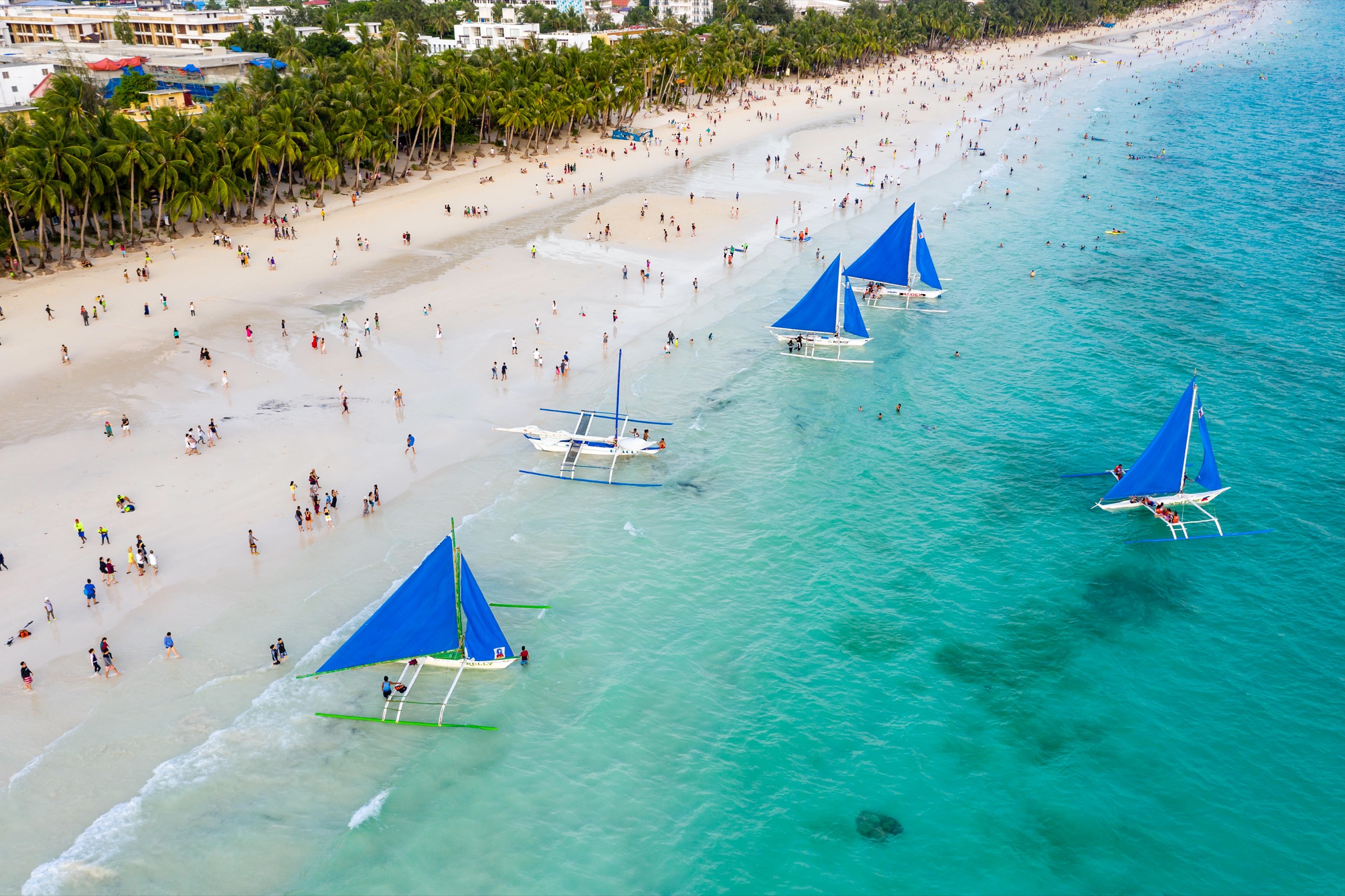It had become known as “Paradise Lost,” or a “cesspool,” as former Philippine President Rodrigo Duterte described it, after it was tainted by sewage. The once brilliant white sand and clear waters of Boracay Island were choking on the trash and traffic that comes from 2 million annual visitors. It reached a nadir in 2018, when Duterte closed down all tourism on the island for six months—an emergency Band-Aid for decades of ecological abuse.
Then the pandemic struck, and the Philippines closed its borders, halting even domestic tourism to Boracay. It took a severe toll on the local economy, but the silver lining was that this 4-sq.-mi. speck in the Visayas island chain had proper time to truly recover. As of February 2022, international visitors can finally revel in this revamped, recuperated, natural playground after what was effectively a three-year convalescence. Locals report the return of flora and fauna, like sea turtles, and hospitality has come back just as spectacularly. The luxurious Crimson Resort and Spa, originally opened in March 2018, offers 192 rooms including suites and villas, plus cascading infinity pools, and a private beach.
- How Donald Trump Won
- The Best Inventions of 2024
- Why Sleep Is the Key to Living Longer
- Robert Zemeckis Just Wants to Move You
- How to Break 8 Toxic Communication Habits
- Nicola Coughlan Bet on Herself—And Won
- Why Vinegar Is So Good for You
- Meet TIME's Newest Class of Next Generation Leaders
